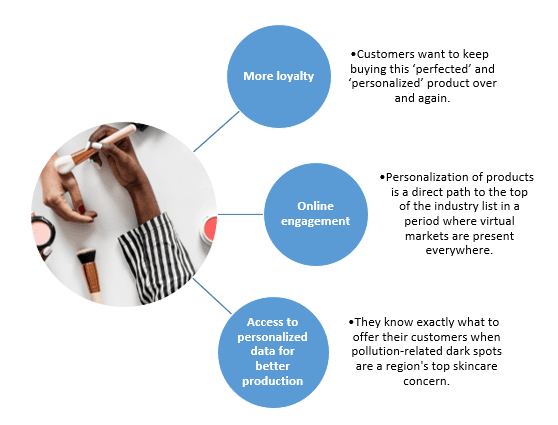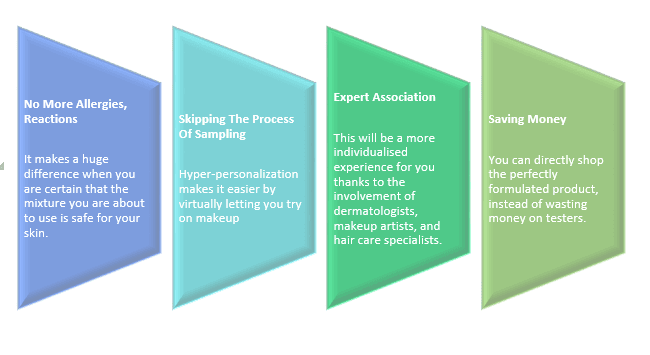“Unlocking Your Unique Beauty: The Power of Hyper-Personalization in Beauty Brands”
Hyper-personalization is all about identifying or developing products that are personalized to your particular skin and hair types. The ultimate example of elevated skincare, this could involve knowing your skin tone, eating preferences, coloring preferences, or even using your DNA to understand and change the ingredients in the products you need.
India is still catching up with technology, whereas international brands like Prose, L’Oreal SkinCeuticals, Optune, and others are fully on board with hyper-personalization.
How will it help brands?
A few major beauty and personal care companies have begun implementing Augmented Reality features, but overall adoption, use of AR during the purchasing process, and integration of AR-generated data with the natural environment of marketing technology have been low. If done correctly, this can result in businesses providing highly personalized interactions and communications through various channels of interaction, leading to:

Main Market drivers of personalization in beauty:

The continuous improvement of easy and convenient communication between brands and consumers is the most obvious technological development that supports the personalization trend in beauty and personal care. Within digital communication, user experience and interface design have developed into a distinct and significant category. Customers are encouraged to effortlessly connect at any touchpoint along the customer journey using apps, voice interaction devices, survey tools, or VR and AR interfaces, so they don’t have to search for ways to communicate. The development of big data analysis and machine learning technologies is another crucial force behind the search for personalized beauty offers. The most important driver in beauty personalization is changing consumer demands and attitude towards the idea of beauty and consumerism in general. Beauty companies have to innovate and invest in the right tools and operating model to survive and thrive in the new digital world
How Does It Help Customers?

Conclusion:
While personalization and digitization will continue to advance together, many consumers will still prioritise safety and convenience. As a result, they will value the digital components of personalised beauty, such as skin analysis on a mobile application and virtual dermatologist consultations. Future developments will bring more improvements in these areas. Applications in the marketing of skincare products for virtual and augmented reality are likely to emerge soon. Virtual and augmented reality are becoming more and more popular for ‘hands in beauty products. The safety of the customer should therefore be the top priority for any brand that offers quality goods. Since trust is the most important value in customer relations, it is crucial to be transparent about what happens to and who gets to use the data provided. With a focus on R&D, an in-depth knowledge of skin, its processes and needs, Industries develop active ingredients that make and keep skin healthy, comfortable and beautiful.
Author: Sakshi Gupta
For more detail Contact:
UnivDatos Market Insights
C 80B, Sector-8, Noida,
Uttar Pradesh 201301
For Sales related queries, please reach us at [email protected]
